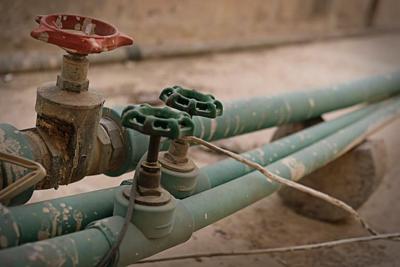
Maintaining a home is one of the many responsibilities that homeowners have. Proper maintenance can save you lots of money in the long run and can also improve your life on a day-to-day basis.
Water-related issues can be particularly troublesome to deal with. In the absence of proper plumbing experience, most homeowners find that the easiest solution when they encounter an issue is to shut off the water. This stops the problem (whatever it may be) from worsening until help arrives.
There is one main problem here though. Do you know where your main water valve is located? Also, are you aware of the different situations where you might need to turn off your water? If you answered “No” to any of those questions, read on.
Where is the Main Water Valve?
The exact location of your main valve to shut off the water supply will vary from home to home. Generally, it is located close to the water meter but may also be found close to where the water line enters your house.
You may need to follow the pipes until you find it, but every house has a main water valve, so it's just a matter of getting a flashlight and exploring for a bit.
Sometimes the valve can also be in the basement or even tucked away in a crawl space or utility room. If you still can't find it in those areas, there is a chance that it is located outside your home, near the sidewalk or curb.
The water valve may appear in the form of a quarter-turn ball valve that only turns 90 degrees. It is commonly painted in a bright color such as red or yellow. Sometimes, you may see a spigot rather than a quarter-turn valve. If it is a spigot, all you have to do is turn it clockwise to turn off the water supply.
If, on the other hand, it is a quarter-turn ball valve, simply remember that if the lever is following the pipe in a parallel manner, it is on.
To shut off the water supply, you will need to turn the valve so that it juts out perpendicularly to the pipe.
Once you have stopped the floor of the water, it is a good idea to make a note of its location and mark it with a ribbon or some identifying label for other members of your family to find it easily in the future.
What Are the Situations Where One Needs to Use the Shut-off Valve?
Now that we have learned the location of the main shut-off valve. It's important to understand the types of situations when you would need to access and use it.
Typically, that are three main situations:
1. Burst Pipes
Burst pipes are one of the most common issues that homeowners face. This is particularly the case during winters when cold temperatures make bursting pipes a common occurrence.
Some of the most common symptoms of a burst pipe include a drop in water pressure, strange noises, and moldy odor.
However, there is one symptom that is particularly telling of a burst pipe, and that is water leakage. You might notice this in the form of dampness on your wall, ceiling, and floor. You might even observe small puddles that shouldn’t be there.
If you notice such signs, you need to act quickly in order to minimize property damage. Shutting off the water valve is one of the first things you should do in this situation. If you have had such issues in the past, it’s a good idea to learn more about burst water pipes and find out what steps to take as you wait for a plumber to arrive.
2. Repairing or Upgrading
This is another common but normal occasion when a water valve would need to be turned off. Usually, your plumber who is doing the repairs will shut it off before they even begin working on issues or upgrades.
They can obviously not work on fixing leaks or replacing fixtures when the water is gushing out at maximum pressure.
3. Water Quality Issues
Sometimes, the issue may not be in your house but elsewhere. At such times, it becomes necessary to know how to turn off your water supply. For example, if you notice foul odors or discoloration in the water, it is likely that contamination has occurred elsewhere.
In these situations, there is not much that a homeowner can do except turn off the water supply, inform local authorities or the local health department and make alternate arrangements for water until the situation is resolved.
Most homeowners live their lives not bothering to be aware of these simple yet essential aspects. It is quite possible that knowing where your main water valve is will save you much trouble and money at some point in your life.
Burst pipes and leakages are an inevitable part of owning a home. Ensuring that you and your family know how to turn off critical aspects such as power and water has the potential to even save lives.


(0) comments
We welcome your comments
Log In
Post a comment as Guest
Keep it Clean. Please avoid obscene, vulgar, lewd, racist or sexually-oriented language.
PLEASE TURN OFF YOUR CAPS LOCK.
Don't Threaten. Threats of harming another person will not be tolerated.
Be Truthful. Don't knowingly lie about anyone or anything.
Be Nice. No racism, sexism or any sort of -ism that is degrading to another person.
Be Proactive. Use the 'Report' link on each comment to let us know of abusive posts.
Share with Us. We'd love to hear eyewitness accounts, the history behind an article.